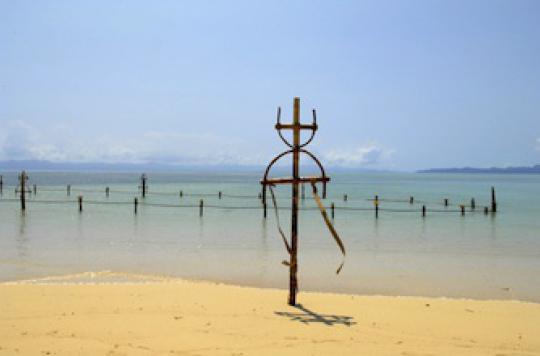The death of the Koh-Lanta candidate is akin to sudden death in effort. Dr Alain Ducardonnet details the causes of this form of heart attack without any warning.
The body of Gérald Babin, candidate from Koh-Lanta who died last week of a heart attack in Cambodia during the filming of the first episode of the 16th season of the game, was autopsied on March 29 at the Forensic Institute of Paris . According to RTL, the 25-year-old did not suffer from any cardiac or vascular abnormalities. Gérald therefore did not present, a priori, any pathology likely to have caused his death., announces the radio which insists that these results are partial. The autopsy will obviously have to be supplemented by a battery of radiographic, toxicological examinations, the results of which will only be known in a few days.

The body of Gérald Babin, candidate from Koh-Lanta who died last week of a heart attack in Cambodia during the filming of the first episode of the 16th season of the game, was autopsied on March 29 at the Forensic Institute of Paris . According to RTL, the 25-year-old did not suffer from any cardiac or vascular abnormalities. Gérald therefore did not present, a priori, any pathology likely to have caused his death., announces the radio which insists that these results are partial. The autopsy will obviously have to be supplemented by a battery of radiographic, toxicological examinations, the results of which will only be known in a few days.
Yet one question still remains unanswered. How can we explain these phenomena of heart attack in subjects without any announcing element? Tragic deaths which have already struck top athletes, especially famous footballers (Marc-Vivien Foé, Antonio Puerta). For cardiologists, these sudden deaths of exertional athletes are often due to a whole series of anomalies which, in young people, are rarely detected. Phenomena as violent as they are unpredictable as Dr Alain Ducardonnet, cardiologist and member of sports cardiologists explains to us.
Rarely detected anomalies
Dr Alain Ducardonnet. “Most often these anomalies correspond to two cases. The first is that of cardiac abnormalities which have not been detected and which are congenital. The most common is abnormal thickness of the heart muscle, i.e. hypertrophic cardiomyopathy. And when you have an abnormal heart muscle, it causes arrhythmias and you can die from it during efforts. There may be other abnormalities such as congenital abnormalities in the positioning of the coronary artery.
We can also evoke the cerebral aneurysms which “fart” during an effort.
These abnormalities in young people are rarely detected except in very high level athletes for whom systematic ultrasounds are done ”.
Autopsy that does not detect any cardiac or vascular abnormalities
Dr Alain Ducardonnet. ” VSIn fact, so-called white autopsies do not reveal any cardiac or vascular anomalies, they most often correspond to rhythmic anomalies. There was no death of the heart muscle that could suggest a heart attack. So, the most frequent diagnosis (by default because the subject is dead), in this case, it is that of electrical abnormalities of the heart muscle which can be linked to short circuits and which will trigger a fatal rhythm disorder, that is, either ventricular tachycardia or ventricular fibrillation.
Because of these electrical anomalies at a given moment, a mosaic of risks appears. For example, people need only be very stressed, possibly dehydrated or in an extremely hot atmosphere. All these elements combined at the wrong time and with a very small electrical susceptibility of the heartbeat will give a desynchronization which corresponds at this moment to sudden death..
Finally, this rhythmic abnormality can be triggered when the person has contracted a few days before the flu or an infection. This so-called inflammatory syndrome most often affects the myocardium. And in this case, it can again cause arrhythmia. Indeed, this inflammatory zone can create a desynchronization and therefore a sudden death by rhythm disturbance ”.
How to avoid these accidents?
Dr Alain Ducardonnet. “There is a rule that must be given for the general public who play sports, it is never to practice physical activity when you have a cold, when you have the flu or a fever. In addition, with an EKG, a number of things can be detected, including certain electrical abnormalities. So doing an electrocardiogram is still profitable for an athlete ”.
.

















